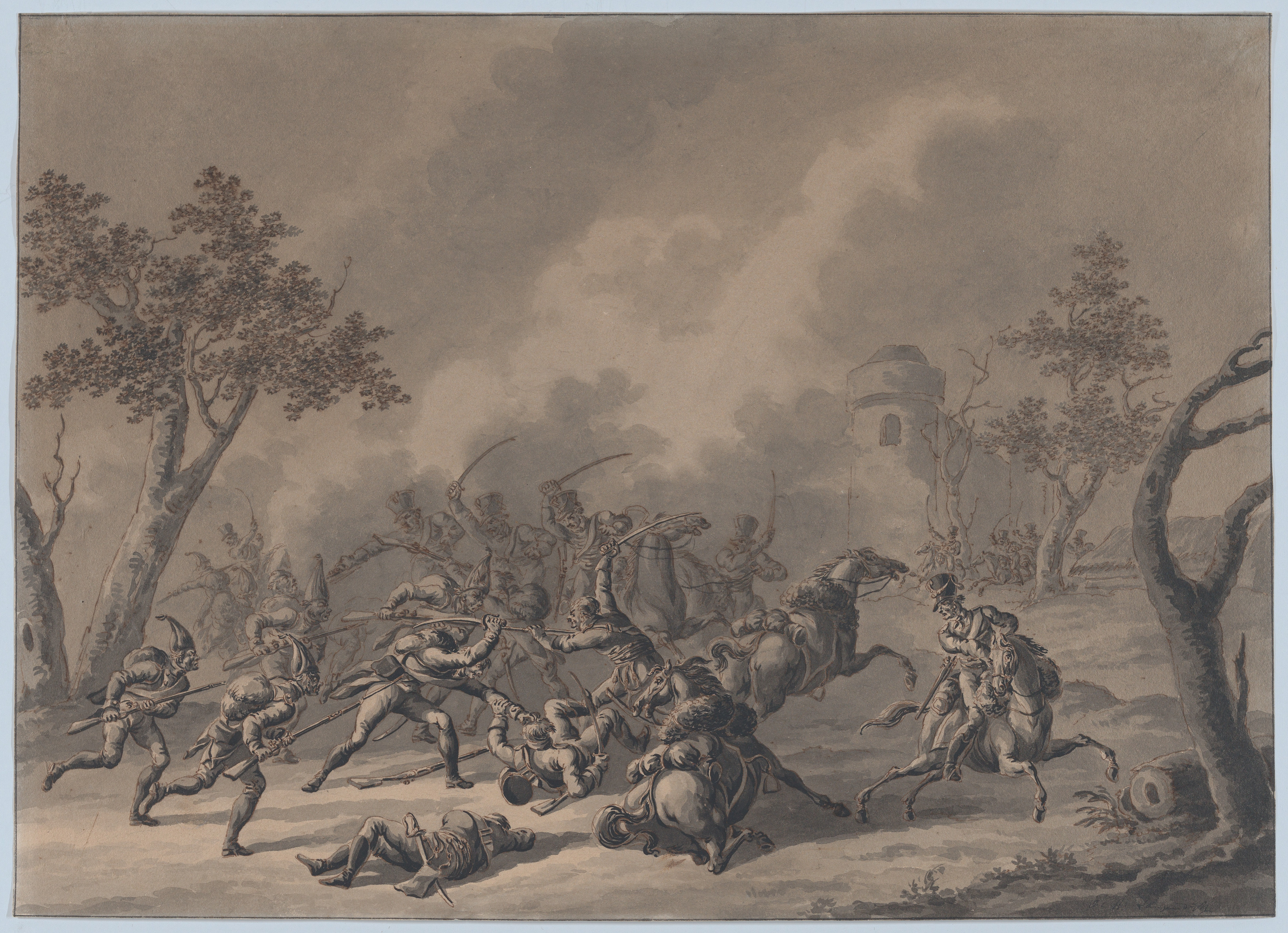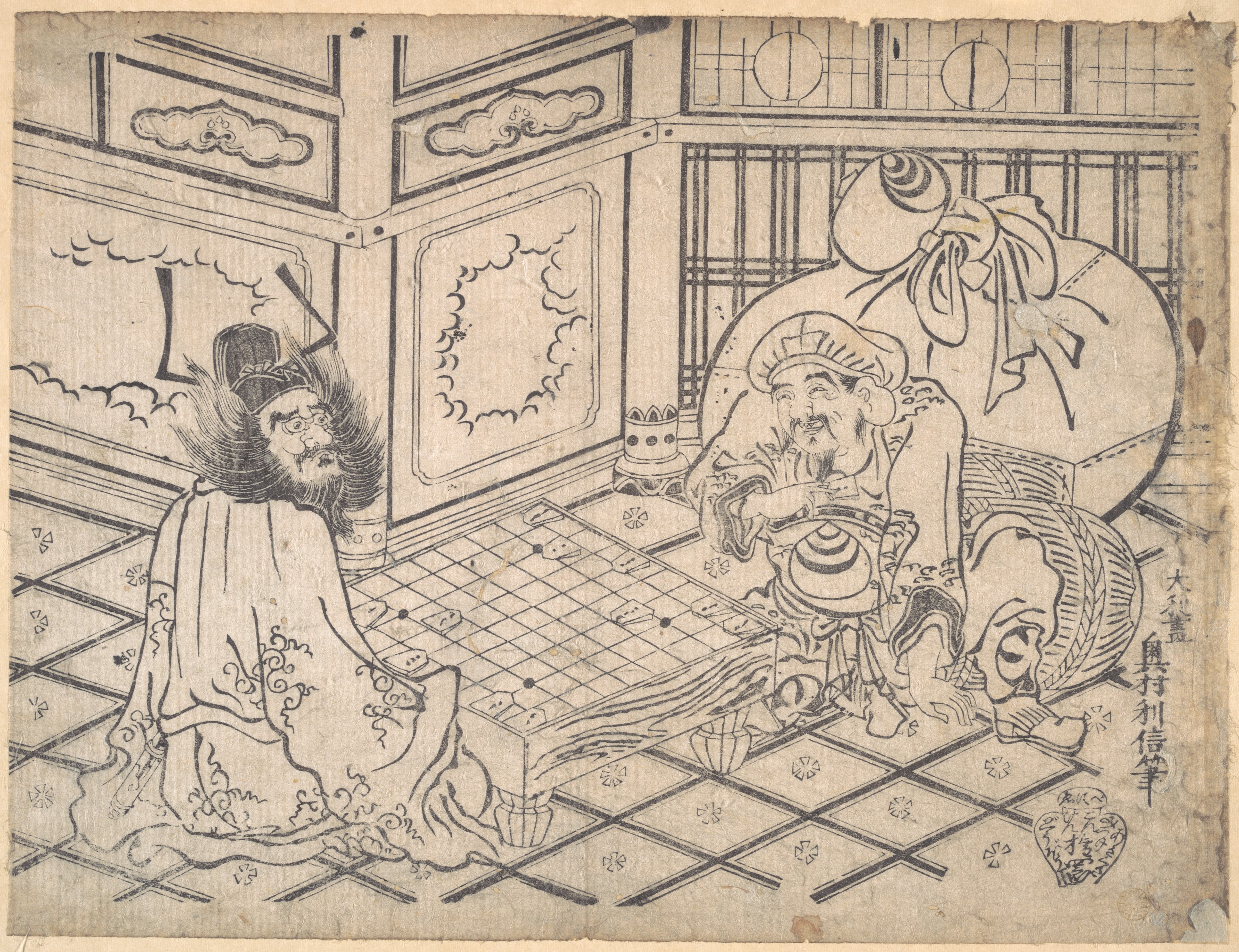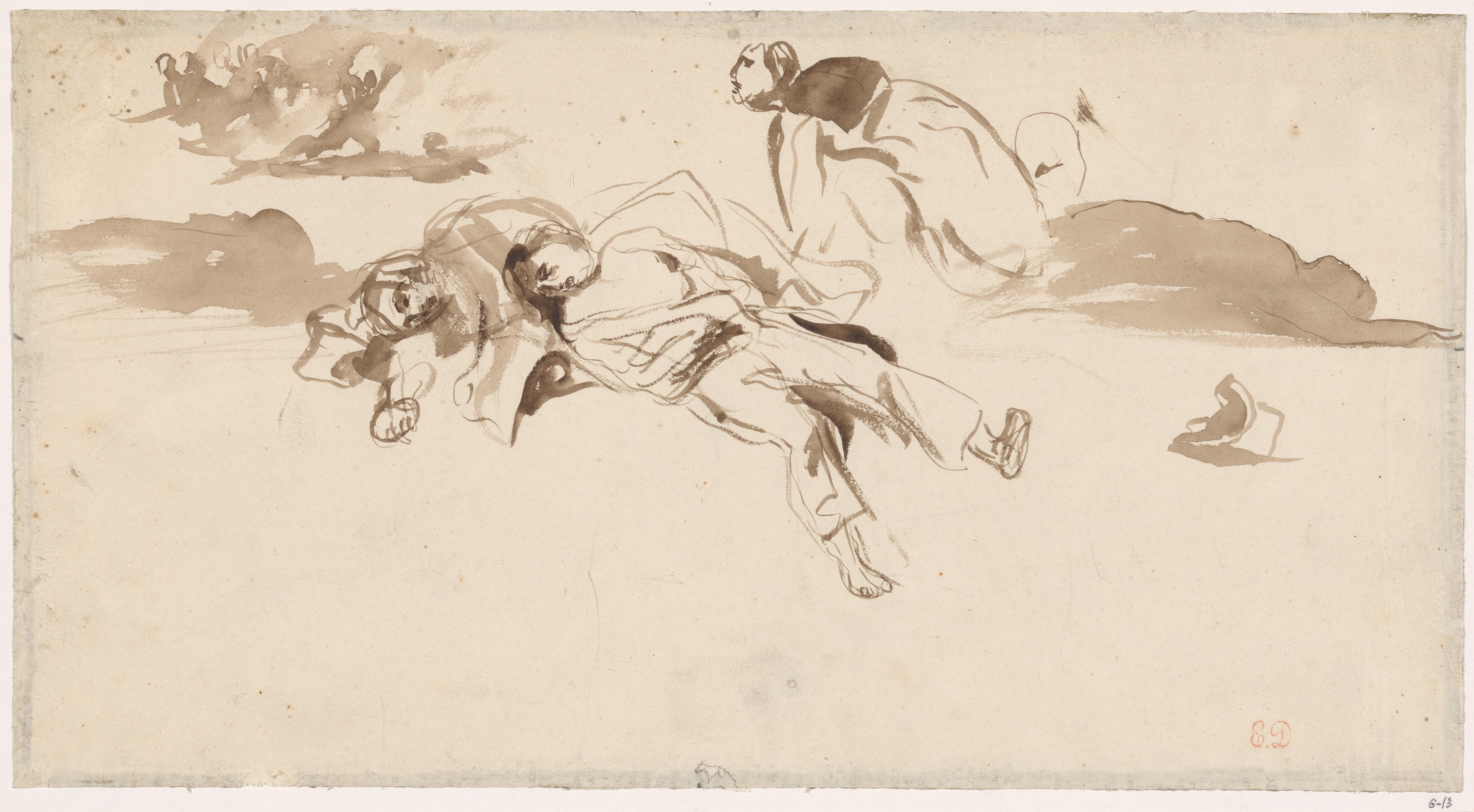Combat Flow - eskerthebreton/thrum GitHub Wiki
| Previous: Combat and Utility Arts | Next: Basic Combat Abilities |
|---|

The order of events in combat is as follows:
-
NPC Placement: The GM places NPCs on the combat map
-
Initiative: All characters (both sides) roll 2d6 adding their Initiative modifier
-
Round Zero: PCs select starting positions within the designated Starting Area, and take initial Stances
-
Rounds 1+: PC and NPC turns occur in descending order of rolled initiative, each consisting of a Move, Action and Stance. This repeats until either:
- All PCs are incapacitated or removed from combat
- All NPCs are incapacitated or removed from combat
- A specified Win Condition or Defeat Condition is met
-
End of Combat: Any incapacitated PCs recover, current Fatigue and Stress are reset to 0, and current Fatigue Tolerance and Stress Tolerance are recorded
Combat is divided into Rounds, in which each character (PC and NPC) participating in the combat (that round) takes a Turn.
Before combat starts, each combatant participating in the fight rolls Initiative, by rolling 2d6 and adding their Initiative modifier.
Turns within a round take place in descending order of Initiative. This order remains the same round after round unless a character elects to Delay their turn.
A player (or the GM) can choose to delay acting in a round until a specified point in the initiative order. If they do, their turns take place at that later position for the rest of the combat. This can only be done once per round, so if for instance Bob rolled the highest initiative total, and elects to delay their turn until after Alice, Alice could choose in turn to delay her turn until after Bob, but at that point Bob would have to act (he cannot delay again).
At the start of combat a special Round Zero occurs, in which characters take no actions, but on their turn can position themselves within the Starting Area designated by the GM, and enter a Stance
On their turn, a character does the following in order:
-
Start of Turn
a. If Stress Load exceeds Stress Tolerance, make a Panic Roll
b. Resolve other Start of Turn effects - Move up to their Speed (See Movement)
- Take an Action provided by either a Basic Combat Ability or an ability selected from a Combat Art
- Take a new Stance (provided by either a Basic Combat Ability or an ability selected from a Combat Art) ending the current one, or remain in the current one
-
End of Turn
a. Resolve End of Turn effects
b. Decrement stacks of any Statuses that tick down at the end of the turn
Once a character stops moving to take an action, they cannot continue moving afterwards unless their action tells them they can. Characters can only maintain one Stance at a time. All characters have access to all of the Basic Combat Abilities at any time, which provide options for Actions and Stances that supplement those they gain from abilities they select from Combat Arts.

Combat takes place on a square grid. Both movement and distance are measured in Squares.
A square counts as Adjacent to another square if it orthogonally or diagonally adjacent (i.e., each square has 8 adjacent squares surrouding it). Moving to any adjacent square costs one square of movement unless the terrain or an effect alters this cost.
The distance between two squares is equal to the "birds-eye" movement that would be needed to travel from one square to the other when moving unhampered. In other words, squares adjacent to adjacent squares that are not themselves adjacent to the starting point are at range 2, squares adjacent to those that are not at range 1 or 2 are at range 3, etc.
This produces a simple rule: The distance between any two squares is always the longer of the two of the horizontal distance between their respective columns and the vertical distance between their respective rows on the grid. So if a square is 7 squares to the "west" and 4 squares to the "north", it is 7 squares away, because the shortest path to it requires 7 steps.
A target is valid for an ability with Range X if the distance between them is X or less.
Characters can use a number of squares of movement up to their Speed during the Move phase of their turn. Moving to an adjacent square costs 1 square of movement unless something changes that cost (such as Elevation or Difficult Terrain. Characters can move through the space of allies as if the square were open but cannot stop there or be pushed there. Characters cannot move into the space of an enemy unless something specifically allows this.
Some abilities allow characters to Teleport to a space within a specified range. When teleporting a character does not pass through intervening spaces. If a Teleportation effect uses movement, it ignores effects that would increase the movement cost associated with leaving the origin space or entering the destination space.
When something targets an area, its area of effect is either listed as Area X, Line X or Aura X (where X is an integer).
An Area X consists of a square on the grid which is X unit squares on a side. So, an Area 2 is a 2x2 square, Area 3 is a 3x3, and so on.
A Line X consists of X consecutive squares sharing a row, column, or diagonal.
Area and Line effects must have at least one space within the range of the ability that places it. If the ability has Range 0, the ability user's space must be in the area.
An Aura X area consists of all squares at a distance X or less from the ability user other than the ability user's space itself, and remains centered on the target even if they move. So, an Aura 1 effect impacts a 3x3 square centered on the source, an Aura 2 effect impacts a 5x5 square, etc., with a "hole" in the center.
The default is that map squares are at Elevation 0. Squares that are higher or lower are labeled in discrete increments above or below this baseline, (+1, +2, -1, -2, etc).
Characters can ascend or descend one elevation level as part of moving to an adjacent square without any additional movement cost. For each increment beyond the first, it costs +1 square of movement to ascend or descend.
Characters can descend to an adjacent square which is 2 or more elevations below without expending extra movement by making an Endurance or Reflex roll (their choice), contested by the environment, which has an opposition level equal to the difference in elevation. On a success they land on the lower terrain with no adverse effect. On a fail they are +1 Slowed. If they have already expended movement equal to their new speed, they cannot move further and are +1 Dazed. The same process applies if a character is moved involuntarily in a manner that causes them to descend two or more elevation levels in a single square.
Exiting a space designated as Difficult Terrain costs +1 square of movement.
The following categories of characters (or their combinations) are designated as potential targets of abilities.
Self: The ability user
Ally: A character other than Self fighting on the same side as the ability user (this can be either a PC or NPC)
Enemy: A character fighting on an opposing side from the ability user
Character: Any of the above
Abilities that target an Area affect all characters in the area unless otherwise specified.
The character making an attack rolls using their modifier for the Art that grants the attack. In the case of a Basic Attack, use the highest Art modifier.
When a character is targeted by an ability with the Attack type, they always have the chance to defend themselves using either a standard defensive roll (their choice of Resilience or Evasion for Physical Attacks, or Evasion or Resolve for Mental Attacks), or an ability that provides an alternative defensive option. This is the only time characters act outside their turn, unless their current stance has a Triggered Effect that can occur outside their turn.
When the defender has a choice of defensive options they must decide which one they are using before the attack is rolled, unless an ability specifies otherwise.
Some attack abilities have the Ranged tag. These abilities have +1 Bane on the roll for each enemy adjacent to the ability user.
Attacks with the Finisher tag have a special effect when used against Exhausted targets, triggering an immediate Incapacity Roll.
Characters adjacent to spaces occuped to terrain which is +2 or more levels of elevation higher than their space or by another character have Cover against Physical Attacks originating from spaces on the opposite side of and at a lower elevation level than the source of cover. To determine whether cover applies, draw a line perpendicular to the one connecting the target and the adjacent source of cover (whether cardinal or diagonal). If the attacker is on the opposite side of the line, then cover applies.
For example, if the target is directly to the right of the higher ground, then they would have cover from attacks originating anywhere to the left of the vertical line squares containing the higher terrain. If the target is directly adjacent down and to the right, the dividing diagonal would run through higher terrain from the lower left to the upper right, and the character would have cover from attacks originating to the "northwest" of that diagonal.
If the two squares adjacent to the one providing cover along the dividing line also qualify for providing cover (occupied by terrain +2 elevation or more above the attack target or by a character), then the path between the attacker and target is Obstructed and that space or a character in it cannot be targeted by that attack (characters can still be affected by areas however, provided some other space in the area is not obstructed).
An attacker targeting a character with Cover rolls their attack at +1 Bane.
Some abilities allow the ability user to voluntarily take Stress in order to increase the impact of the ability. The additional effects or enhanced effects are tagged with Overexert in the ability description. Unless the ability specifies otherwise, Overexert needs to be declared and Stress taken before any rolls occur.
Some abilities create Terrain Effects, which are areas that exert an ongoing influence on characters in or passing through them but do not directly target characters. A particular character can only have one Terrain Effect in place at a time: if they create a new one any previously placed Terrain Effects disappear.
Other abilities are tagged as Buffs. These generally target the ability user themselves or an allied character and persist until the end of combat unless they specify a condition under which they end sooner. A particular character can have any number of Buffs created by their abilities active at a time, but a particular target can benefit from only one at a time. If a target who is already benefitting from a Buff effect is targeted by another one, they may choose whether to end the previous one or decline the new one.
When a character is targeted by a Physical Attack they may choose to defend using their choice of Resilience or Evasion, but must choose which to use before the offensive roll is made. This choice involves tradeoffs, with Evasion representing more of a "gamble" whereas Resilience provides more of a "hedge".
When targeted by a Mental Attack, Resolve is used in place of Resilience. Evasion can also be used here, again representing the same "high-risk, high reward" tradeoff.
To contest a roll using Resilience, a character uses their Resilience modifier (normally equal to their END modifier). The possible outcomes are as follows:
- Success: Avoid the effect.
- Failure: Take the effect.
To contest using Resolve, a character uses their Resolve modifier (normally equal to their FOC modifier). The possible outcomes are as follows:
- Success: Avoid the effect
- Failure: Take the effect
To contest using Evasion, a character uses their Evasion modifier (normally equal to their your REF modifier). They gain an automatic +1 Boon on the roll if they are not Vulnerable. The possible outcomes (from the defender's perspective) are as follows:
- Critical: Avoid the effect
- Success: Avoid the effect but take +1 Vulnerable
- Failure: Take the effect and take +1 Vulnerable
In some cases, an ability may list a Trigger. In these cases any effect listed after the trigger occurs only when the triggering condition is satisfied. In the event multiple characters have effects triggered by a common trigger, they resolve in initiative order (from the top of the order down). If an effect is triggered by the effect of another triggered effect, they resolve in last-in-first-out order (i.e., as a "stack"). In other words, triggered effects preempt the remaining resolution of any abilities that create their trigger.

Unlike in many other games, characters do not have hit points (or a health pool). Instead, attacks will usually specify that they deal Fatigue or Stress when they connect.
When a ability deals Fatigue or Stress, the target receives +1 to their Fatigue Load or Stress Load respectively. These load scores start out at 0, and are reset to 0 when combat ends.
When a character's Stress Load exceeds their Stress Tolerance, they are Frayed until their Stress Load no longer Exceeds their Tolerance. Frayed characters have +1 Bane on all defensive rolls. If a character is Frayed when they start their turn, they must make a Panic Roll.
A character making a Panic Roll rolls 2d6 and adds their Resolve modifier. The total must exceed (not tie) the character's Stress Load, or else the following occur:
- They are Stunned
- Their Stress Load is added to their Fatigue Load (and then reset to zero)
- Their Stress Tolerance decreases by 1
When a character's Fatigue Load exceeds their Fatigue Tolerance, they are Exhausted until their Fatigue Load no longer Exceeds their Tolerance. Exhausted characters have +1 Bane on all offensive rolls, and must make an Incapacity Roll after they take an Action, unless the Action removes Exhaustion. Attacks with the Finisher tag trigger Incapacity Rolls immediately after the attack resolves if their target is Exhausted.
A character making an Incapacity Roll rolls 2d6 and adds their Resilience modifier. The total must exceed (not tie) the character's Fatigue Load, or else they are Incapacitated.
Upon becoming Incapacitated, the character's current Stance immediately ends, and they cannot move, act, or take stances until they are no longer Incapacitated. Statuses and Buffs remain, and Statuses with a parameter tick down at the end of the character's turns as normal.
Upon becoming Incapacitated, and at the end of each of their turns while Incapacitated, the character's Fatigue Tolerance and Fatigue Load are both decreased by 1.
If a character ends a turn Incapacitated while their Fatigue Tolerance is zero, they take a Wound. Upon accumulating three Wounds, they are removed from combat and cannot continue normal campaign activities. This may not necessarily mean they are dead -- it could be that are comatose, or require extended convalescence, etc. It is up to the table to decide whether this means the player controlling that character needs to make a new character, whether their character can return to the action after some amount of downtime, etc.
Incapacity can end in three ways:
- Fatigue Load is reduced to zero
- Another character targets them with the Resuscitate action
- Another ability is used that ends Incapacitated
Since Fatigue Load ticks down each turn a character spends Incapacitated, they will eventually revive on their own (at the expense of lost Fatigue Tolerance), even during combat. Fatigue Load is immediately set to zero when combat ends, so any Incapacitated characters can immediately return to action, provided their Tolerance has not been reduced to zero by then.
Although Fatigue and Stress Load can be reduced during combat in several ways and are reset to zero at the end of combat, diminished Fatigue Tolerance and Stress Tolerance can only be restored, and Wounds healed, by Downtime or perhaps by particularly powerful items or narrative objectives.
| Previous: Combat and Utility Arts | Next: Basic Combat Abilities |
|---|